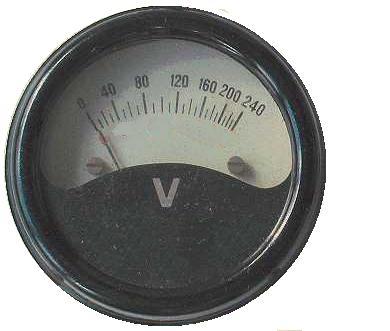
By coincidence I had a marketing email from a company selling a product called PowerPerfector which promises customers instant electrical power savings of several percent. At first it looked like one of those too-good-to-be-true offers but after digging through the hype it turned out to be a voltage-reduction device that has some merit.
I got some feedback on the advertising literature from two of our editorial advisers and from a very experienced senior electrical engineer in a manufacturing plant, and basically all agree that voltage reduction works, but they point out that larger consumers will probably already have the ability to reduce their own supply voltage by 'tap-changing', that is, altering the step-down ratio on their supply transformers. In fact the electrical engineer said he had been progressively reducing voltage on his site for some time.
Voltage reduction works by cutting the power dissipated in filament lamps (which lose a little brightness, but last longer) and unregulated motors like toilet extract fans (which also enjoy longer life and reduced losses). Motors with speed control or regulated mechanical output will show no savings because their electrical power requirements are dictated by the mechanical load. Voltage reduaction also reduces the power output of electric heaters, but here there is no gain because they will run longer so that ultimately the same amount of energy is delivered. Voltage reduction is possible because many consumers' supplies are maintained at higher levels than is strictly necessary. To quote PowerPerfector's Angus Robertson writing in Energy World:
'the average supply is around 415 V (240 V single phase), so there is an opportunity to reduce this by 9% to 380 V (218 V single phase) and still be inside current statutory supply levels in the UK even before the next stage of harmonisation where it drops to 360 V'.Here's Nick Osmaston's view:
'For some time I have been recommending voltage reductions as a method of reducing energy consumption. It is well known that reducing the voltage reduces the consumption of fluorescent fittings (transformers for doing this have been available for years), and there are also some savings to be made on the majority of electric motors. However, I recommend that clients use the tappings on their existing transformers to achieve this: it is usually possible to achieve a 5% voltage reduction and sometimes more. The percentage saving in energy will probably be somewhat greater than the percentage reduction in voltage. However, I only do this having established the actual range of voltage that a site is experiencing.'Nick is obviously right to be cautious about this technique, because supply voltages vary around the network, and if your voltage is already low you won't make any savings and you could be at risk of equipment malfunction. PowerPerfector's literature recognises this, but it also claims various other benefits in terms of power quality improvement (reduced harmonics, spikes and phase imbalance).'I do mention PowerPerfector to clients, along with Claude Lyons who produce similar equipment. However, as I do not have prima facie evidence of the scale of savings I always recommend a trial installation. Secondary transformers are always going to be a lot dearer than a tap adjustment, so you need to be sure that you will achieve decent savings'.
Vilnis Vesma, 22 July 2006. Nick Osmaston is an independent energy consultant and a member of our editorial advisory panel
Stop press 19 April 2007 Claude Lyons have written to us to draw attention to their "Energy Saving Stabiliser" products (see their technical note Energy saving and equipment life prolongation by voltage reduction). These products address the uncertain-voltage problem and thereby safely maximise the achievable savings.